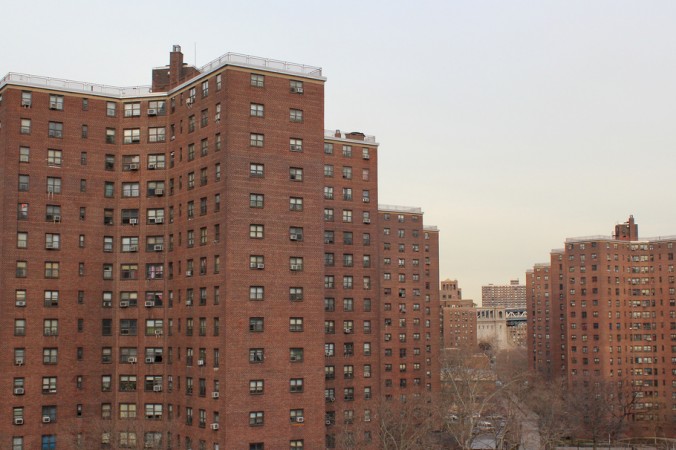In this presentation, Gary Klein shares important information about air source heat pump water heaters (HPWH), with particular attention paid to where the warm air comes ...
Solving a Steam-to-Water Heat-Exchanger Problem

I once visited an engineer who worked for the City of New York.
He worked at a pitted drafting table in a green room that occupied about an acre of New York City real estate. He shared this green room with about a hundred other City engineers. Green is supposed to be a calming color.
We were looking at a plan for a new heating plant in a City-owned building. The plan called for a steam boiler that was about the size of a cape-cod house. It came complete with all the stuff you'd expect to find around a steam boiler of this size. Above the boiler hung a steam-to-water heat exchanger that was as big as a two-man submarine.
"What's the deal with the heat exchanger," I asked.
"We're heating the building with hot water," the engineer mumbled without looking up from the blueprint.
"I can see that," I said, "But the building is only three stories tall." I was telling him something that he, of course, already knew.
"Uh huh," he muttered, still staring at the plan.
"So why are you using a steam boiler?" I asked out of genuine curiosity. "The building's only three stories tall," I said once again. He looked at me from over the top of his reading glasses. "Why don't you just use a hot water boiler," I persisted "If you use a hot water boiler you won't need the heat exchanger, the boiler-feed pump, these steam traps, the temperature regulator, the strainers." I pointed at all the unnecessary gear on the blueprint. The engineer smiled at me the way you'd smile at a guy who learned about steam heating in Rio de Janeiro.
"Do you understand steam heat?" he asked gently. I nodded. "Do you understand the people who take care of steam heat?" he pressed on.
"Not sure what you mean," I said. He smiled and stood up from the drafting table.
"The people who take care of steam heat are used to doing things a certain way," he explained. His eyes took on a look you get only after spending a lot of years in a green room. "These people blow-down low-water cutoffs. They flush mud legs. They set pressuretrols. They watch pressure gauges. They clean strainers. They scrutinize gauge glasses. They pop relief valves. If we put in a hot water boiler, we will be denying these people the pleasures they've come to expect from a Gotham City boiler room.
"And if we deny them these pleasures," he continued, "they will get aggravated and do bad things. We don't want them to do bad things so we give them what they expect, which is a steam boiler. Do you understand"
"Sort of," I said.
"Good!" He went back to looking at the plans.
Successful troubleshooters understand that we're only human.
In another part of New York City there's a housing project that stretches for blocks. This is a place where thousands of people live together as total strangers. New York City heats these buildings with hot water, and here too, they use a steam boiler and a steam-to-water heat exchanger. How come? Because the buildings are very tall and high-pressure hot water boilers can get pretty pricey.
Besides, in New York City, you need special people to look after high-pressure boilers. The engineers could have used steam, but few people want to heat directly with steam nowadays so they did it with a heat exchanger. That also kept the guys in the boiler room happy.
What the engineers wound up with in this case were a couple of boilers that were as big as two-story buildings and a steam-to-water heat exchanger that looks like a Greyhound bus.
I visited the boiler room on a frigid January morning when the thousands of strangers who live in the connected high-rise buildings were freezing and screaming. The water flowing through their radiators wouldn't get any hotter than 150-degrees, which just doesn't get the job done in January.
Now, before I go any further, I have to tell you how this system works:
The boiler sends steam to the heat exchanger, which hangs in space like a steel dirigible. Condensate from the heat exchanger's shell drips into the return side of the boiler without benefit of a boiler-feed pump. This is okay because you don't need a boiler-feed pump when your heat exchanger is that close to the boiler and your boiler pressure is only 2 psi or so. All you need is gravity, and they had plenty of that.
On the water side, big base-mounted pumps whip the lukewarm fluid out of the heat exchanger and send it flowing under the city streets to the mechanical equipment rooms of the high-rise buildings. These are the primary pumps.
Secondary pumps in the mechanical rooms of each building snatch hot water from the primary flow and send it skyward toward the radiators. These pumps are also pretty impressive to look at.
Everything worked as it should on the day I was there, except the 150-degree water was too cool to heat human buildings. Nevertheless, a small army of men in overalls went from apartment to apartment bleeding radiators. They didn't get any air when they bled those radiators, but that didn't stop them from bleeding. They bled because that's what people in overalls do when there's no heat. They bleed.
When I got there, the boiler room was filled with official-looking guys. Each had an electronic thermometer and a clipboard. These folks were busy probing the pipes and taking temperatures here and there. After a few hours of data collection, this is what they decided: The water, at 150 degrees, was too cool to heat human beings on that particular day.
Their solution was to raise the steam pressure. They raised the steam pressure because that's what people with clipboards do when there is no heat. They had it up to 13-psig when I arrived, and the only thing that kept them from pushing it higher was the 15-psig relief valve setting. They had, you see, reached the limits of this particular technology.
"There's no air vent on the heat exchanger," I mentioned, after poking around the boiler room for a while.
"What are you talking about?" a guy with a clipboard said.
"If you were air, could you get out of the shell of that heat exchanger?" I asked, pointing up. They looked. The condensate return line left the heat exchanger and dropped straight into the bottom of the huge boiler. "There's no way for air to get out," I said. "You're probably using a about a quarter of the exchanger's capacity. That's why the water is so cool."
They weren't buying this.
"This system has worked fine for years," one of them said.
"Do you ever shut the boiler off?" I asked, looking at the vacuum breaker in the exchanger's shell.
"Never!," they said in unison. "We use it year round for domestic hot water. We never shut it off."
"Never?"
"NEVER!"
"Well," I persisted, "somebody must have shut it off. The shell's full of air. Steam can't get in because the air can't get out. That's why the water isn't getting hot."
"That can't be it," one of the clipboard guys said.
"Why not?" I asked.
"Because it's worked for years."
"But it's not working now," I said.
"It's worked for years!" he insisted.
"But when you don't know what's causing the problem, how can you discount any possibility?" I asked. "Aren't you violating the first rule of troubleshooting?"
"Which is?" the clipboard guy asked, giving me a look that could set asbestos on fire.
"To remember that we're all human. And then to check." I said.
They still weren't buying it so I asked one of the boiler room guys if he would take a wrench and clamber up on top of the big boiler. When he got there, I shined my flashlight on this union that was on the heat exchanger's condensate drain line. I told him to loosen it. He did, and a ferocious rush of air came spewing out of the exchanger's shell. Steam shot across the heat exchanger and the water temperature shot up almost instantly.
"But we never shut these boilers off," the guy with the clipboard insisted. And for the first time, he turned to one of the boiler room guys for confirmation. To this point, no one had spoken to any of the boiler room guys, so naturally, they hadn't offered any information. It's like that in Gotham City. Clipboard guys hardly every talk to boiler room guys. And vice versa, of course.
"You ever shut this boiler off?" the clipboard guy asked.
"We shut it off for a half-hour last week to do a repair." came the answer.
And that's all it took to fill the shell with air. A lousy half-hour. The vacuum breaker opened and sucked in great gobs of air, and once it got in, there was no way for it to get out.
I had them add a main vent to the discharge side of the shell. It should have been in there from the start, but someone in the green room had missed that small detail.
Which is easy to understand. We're only human.
Leave a comment
Related Posts
This all-technical, three-hour seminar will make you familiar with the many types of old steam heating systems and what goes wrong with them. Dan Holohan’s easy-to-follow...

In this all-technical three-hour seminar, Dan Holohan will give you a Liberal Arts education in those Classic Hydronics systems. He’ll have you seeing inside the pipes as...